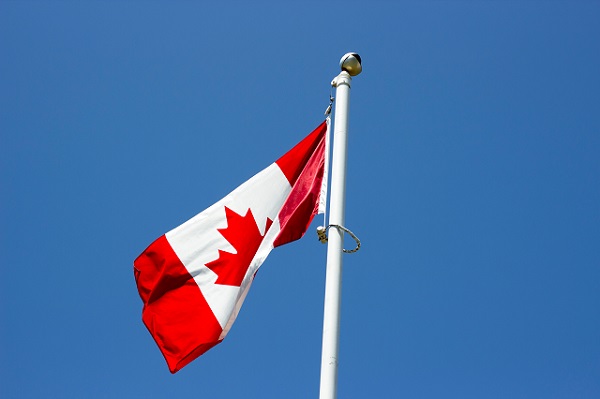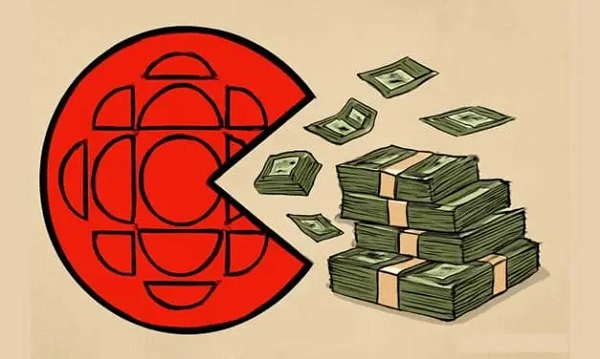Business
Higher Capital Gains Taxes cap off a loser federal budget

From Frontier Centre for Public Policy
By Lee Harding
Even former Liberal Finance Minister Bill Morneau told the Financial Post the capital gains tax increase would be “very troubling for many investors.” He added, “I don’t think there was enough effort in this budget to reduce spending, to create that appropriate direction for the economy.”
New taxes on capital gains mean more capital pains for Canadians as they endure another tax-grabbing, heavy-spending federal deficit budget.
Going forward, the inclusion rate increases to 66 per cent, up from 50 per cent, on capital gains above $250,000 for people and on all capital gains for corporations and trusts. The change will affect 307,000 businesses and see Ottawa, according to probably optimistic projections, rake in an additional $19.4 billion over four years.
A wide chorus of voices have justifiably condemned this move. If an asset is sold for more than it was bought for, the government will claim two-thirds of the value because half is no longer enough. It’s pure government greed.
If you were an investor or a young tech entrepreneur looking for somewhere to set up shop, would you choose Canada? And if you’re already that investor, how hard would you work to appreciate your assets when the government seizes much of the improvement?
Even before this budget, the OECD predicted Canada would have the lowest growth rates in per-person GDP up to 2060 of all its member countries.
In a speech in Halifax on March 26, Bank of Canada senior deputy governor Carolyn Rogers put the productivity problem this way: “You’ve seen those signs that say, ‘In emergency, break glass.’ Well, it’s time to break the glass.”
What can Canadians bash now? Their heads against a wall?
Even former Liberal Finance Minister Bill Morneau told the Financial Post the capital gains tax increase would be “very troubling for many investors.” He added, “I don’t think there was enough effort in this budget to reduce spending, to create that appropriate direction for the economy.”
No kidding. Not since the first Prime Minister Trudeau (Pierre) have Canadians been able to count so reliably on deficit spending, higher expenditures, and more taxes.
Long ago, it seems now, when Justin Trudeau was not yet prime minister, he campaigned on “a modest short-term deficit” of less than $10 billion for each of the first three years and a balanced budget by the 2019-2020 fiscal year.
His rationale was that low interest rates made it a rare opportunity to borrow and build infrastructure, all to encourage economic growth. Of course, the budget never balanced itself and Canada has lost $225 billion in foreign investment since 2016.
The deficits continue though the excuse of low interest rates is long gone. Despite higher carbon and capital gains taxes, this year’s deficit will match last year’s: $40 billion. Infrastructure seems less in view than an ever-expanding nanny state of taxpayer-funded dental care, child care, and pharmacare.
Of course, the Trudeau deficits were not as modest as advertised, and all-time federal debt has doubled to $1.2 trillion in less than a decade. Debt interest payments this coming fiscal year will be $54.1 billion, matching GST revenue and exceeding the $52 billion of transfers to the provinces for health care.
In 1970, columnist Lubor Zink quoted Pierre Trudeau as saying, “One has to be in the wheelhouse to see what shifts are taking place . . . The observer . . . on the deck . . . sees the horizon much in the same direction and doesn’t realize it but perhaps he will find himself disembarking at a different island than the one he thought he was sailing for.”
Like father, like son, Justin Trudeau has captained Canada to a deceptive and unwelcome destination. What started as Fantasy Island is becoming Davy Jones’ Locker.
Lee Harding is a Research Fellow at the Frontier Centre for Public Policy
Business
Canada’s critical minerals are key to negotiating with Trump

From Resource Works
The United States wants to break its reliance on China for minerals, giving Canada a distinct advantage.
Trade issues were top of mind when United States President Donald Trump landed in Kananaskis, Alberta, for the G7 Summit. As he was met by Prime Minister Mark Carney, Canada’s vast supply of critical minerals loomed large over a potential trade deal between North America’s two largest countries.
Although Trump’s appearance at the G7 Summit was cut short by the outbreak of open hostilities between Iran and Israel, the occasion still marked a turning point in commercial and economic relations between Canada and the U.S. Whether they worsen or improve remains to be seen, but given Trump’s strategy of breaking American dependence on China for critical minerals, Canada is in a favourable position.
Despite the president’s early exit, he and Prime Minister Carney signed an accord that pledged to strike a Canada-US trade deal within 30 days.
Canada’s minerals are a natural advantage during trade talks due to the rise in worldwide demand for them. Without the minerals that Canada can produce and export, it is impossible to power modern industries like defence, renewable energy, and electric vehicles (EV).
Nickel, gallium, germanium, cobalt, graphite, and tungsten can all be found in Canada, and the U.S. will need them to maintain its leadership in the fields of technology and economics.
The fallout from Trump’s tough talk on tariff policy and his musings about annexing Canada have only increased the importance of mineral security. The president’s plan extends beyond the economy and is vital for his strategy of protecting American geopolitical interests.
Currently, the U.S. remains dependent on China for rare earth minerals, and this is a major handicap due to their rivalry with Beijing. Canada has been named as a key partner and ally in addressing that strategic gap.
Canada currently holds 34 critical minerals, offering a crucial potential advantage to the U.S. and a strategic alternative to the near-monopoly currently held by the Chinese. The Ring of Fire, a vast region of northern Ontario, is a treasure trove of critical minerals and has long been discussed as a future powerhouse of Canadian mining.
Ontario’s provincial government is spearheading the region’s development and is moving fast with legislation intended to speed up and streamline that process. In Ottawa, there is agreement between the Liberal government and Conservative opposition that the Ring of Fire needs to be developed to bolster the Canadian economy and national trade strategies.
Whether Canada comes away from the negotiations with the US in a stronger or weaker place will depend on the federal government’s willingness to make hard choices. One of those will be ramping up development, which can just as easily excite local communities as it can upset them.
One of the great drags on the Canadian economy over the past decade has been the inability to finish projects in a timely manner, especially in the natural resource sector. There was no good reason for the Trans Mountain pipeline expansion to take over a decade to complete, and for new mines to still take nearly twice that amount of time to be completed.
Canada is already an energy powerhouse and can very easily turn itself into a superpower in that sector. With that should come the ambition to unlock our mineral potential to complement that. Whether it be energy, water, uranium, or minerals, Canada has everything it needs to become the democratic world’s supplier of choice in the modern economy.
Given that world trade is in flux and its future is uncertain, it is better for Canada to enter that future from a place of strength, not weakness. There is no other choice.
Business
Rhetoric—not evidence—continues to dominate climate debate and policy

From the Fraser Institute
Myths, fallacies and ideological rhetoric continue to dominate the climate policy discussion, leading to costly and ineffective government policies,
according to a new study published today by the Fraser Institute, an independent, nonpartisan Canadian public policy think-tank.
“When considering climate policies, it’s important to understand what the science and analysis actually show instead of what the climate alarmists believe to be true,” said Kenneth P. Green, Fraser Institute senior fellow and author of Four Climate Fallacies.
The study dispels several myths about climate change and popular—but ineffective—emission reduction policies, specifically:
• Capitalism causes climate change: In fact, according to several environment/climate indices and the Fraser Institute’s annual Economic Freedom of the World Index, the more economically free a country is, the more effective it is at protecting its environment and combatting climate change.
• Even small-emitting countries can do their part to fight climate change: Even if Canada reduced its greenhouse gas emissions to zero, there would be
little to no measurable impact in global emissions, and it distracts people from the main drivers of emissions, which are China, India and the developing
world.
• Vehicle electrification will reduce climate risk and clean the air: Research has shown that while EVs can reduce GHG emissions when powered with
low-GHG energy, they often are not, and further, have offsetting environmental harms, reducing net environmental/climate benefits.
• Carbon capture and storage is a viable strategy to combat climate change: While effective at a small scale, the benefits of carbon capture and
storage to reduce global greenhouse gas emissions on a massive scale are limited and questionable.
“Citizens and their governments around the world need to be guided by scientific evidence when it comes to what climate policies make the most sense,” Green said.
“Unfortunately, the climate policy debate is too often dominated by myths, fallacies and false claims by activists and alarmists, with costly and ineffective results.”

Kenneth P. Green
Senior Fellow, Fraser Institute
-

 Business2 days ago
Business2 days agoCarney praises Trump’s world ‘leadership’ at G7 meeting in Canada
-

 conflict2 days ago
conflict2 days agoTrump leaves G7 early after urging evacuation of Tehran
-

 Business1 day ago
Business1 day agoThe CBC is a government-funded giant no one watches
-

 conflict1 day ago
conflict1 day agoMiddle East clash sends oil prices soaring
-

 conflict1 day ago
conflict1 day agoTrump Threatens Strike on Khamenei as Israel Pounds Iranian Military Command
-

 Business1 day ago
Business1 day agoTrump makes impact on G7 before he makes his exit
-

 Business2 days ago
Business2 days agoTrump family announces Trump Mobile: Made in America, for America
-

 Also Interesting2 days ago
Also Interesting2 days agoHow to Use Bonuses at Magius Casino and Similar Websites






